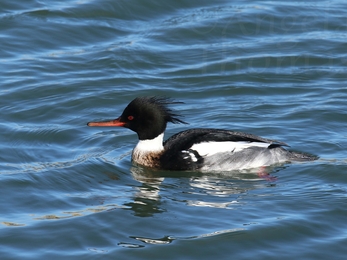Chesil Beach and Fleet Lagoon are exciting areas for birdwatching all year round, but as we head into autumn, it's my favourite time of year for birding, when we start to see numbers of birds build on this internationally important nature reserve.
One of my personal highlights of autumn is the return of the dark-bellied brent goose, with up to 4,000 individuals expected to overwinter, spending their time feeding on the eelgrass found within the lagoon. These small geese start to arrive from the end of September, having travelled an incredible 3,000 miles (4,800 km) from their breeding grounds along the coasts of Arctic Russia or Siberia.





